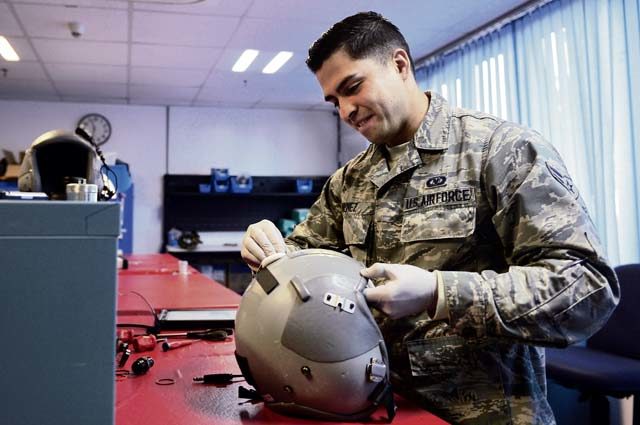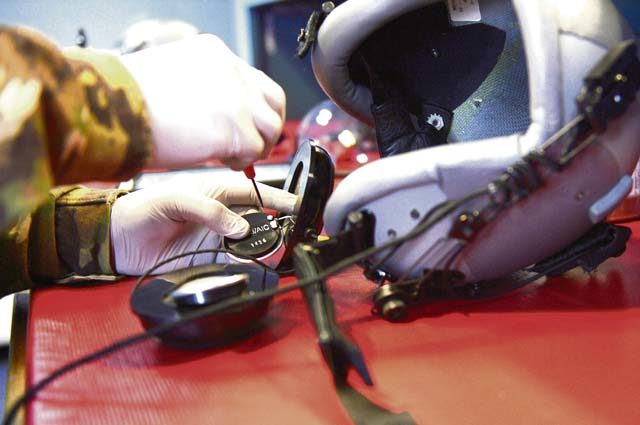
Imagine being in an aircraft 30,000 feet in the air when suddenly something goes wrong — a pressure drop, a fire, a malfunction or any other emergency.
Not only will the aircrew have to act quickly to save themselves, but their equipment must also work properly.
This is why aircrew flight equipment Airmen dedicate themselves to providing clean, functional and flawless equipment to aircrew, said Master Sgt. Kendrick Brown, 86th Operations Support Squadron AFE superintendent. Brown said that by being responsible for the aircrew’s equipment, his Airmen are also partly responsible for the aircrew’s lives.
“One of our slogans used to be, ‘We’re the last to let you down,’” Brown said. “Before anything goes out the door, we conduct an overall integrity check. There are certain steps we have to take, which are mandated by regulations.”
Airmen working in AFE are responsible for inspecting, maintaining and keeping accountability of various kinds of equipment used by aircrew. Equipment maintained by AFE includes but is not limited to helmets, oxygen masks, parachutes, life rafts, night vision goggles and other things used not just for emergencies but flight as a whole. The Airmen check flight schedules and inspect aircraft to insure that the aircrew and airplanes have the equipment they need for the mission.
“At the end of the day, the Aircrew members can’t perform the mission if they don’t have the training and equipment needed to fly that aircraft,” said Master Sgt. William A Correa Jr., 86th OSS AFE flight chief. “Whether it’s a routine mission, an in-flight emergency or a situation where they need to ditch the aircraft, our AFE team ensures they have the best maintained flight gear possible and trained on how to use the equipment.”
Ramstein’s 86th OSS AFE Airmen support aircrew assigned to the 37th Airlift Squadron, 76th Airlift Squadron, and 86th Aeromedical Evacuation Squadron.
Senior Airman Jacob Tittle, 86th OSS AFE technician, stressed the importance of AFE, saying mishaps or worse can occur if equipment does not function properly.
“We keep our aviators alive and safe,” said Tittle, who is deployed from Dyess Air Force Base, Texas. “We do it by keeping our equipment in order and making sure there are no flaws in the system. If we don’t do our job, there can be mishaps, which cause mission degradation or loss of life. We try to avoid this.”
Tittle recalled stories told to him at other installations where in-flight emergencies occurred and the crew were saved by equipment he helped process.
“It feels good when you hear that your equipment worked and saved peoples’ lives,” he said.
Brown said he is proud of his Airmen, recognizing that although a sizable number of them are new to the Air Force, they still conduct high-quality work.
“We have some great young folks,” he said. “They’re no nonsense type of people who come in ready to work and perform the mission. Their performance is unbelievable. I can’t even find the words to describe them.”



